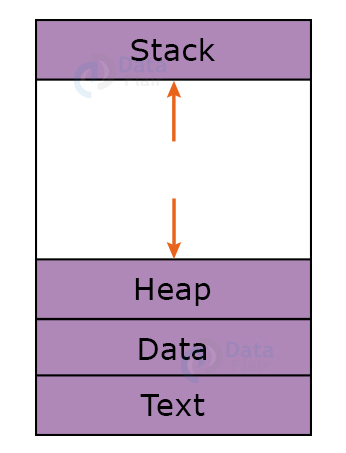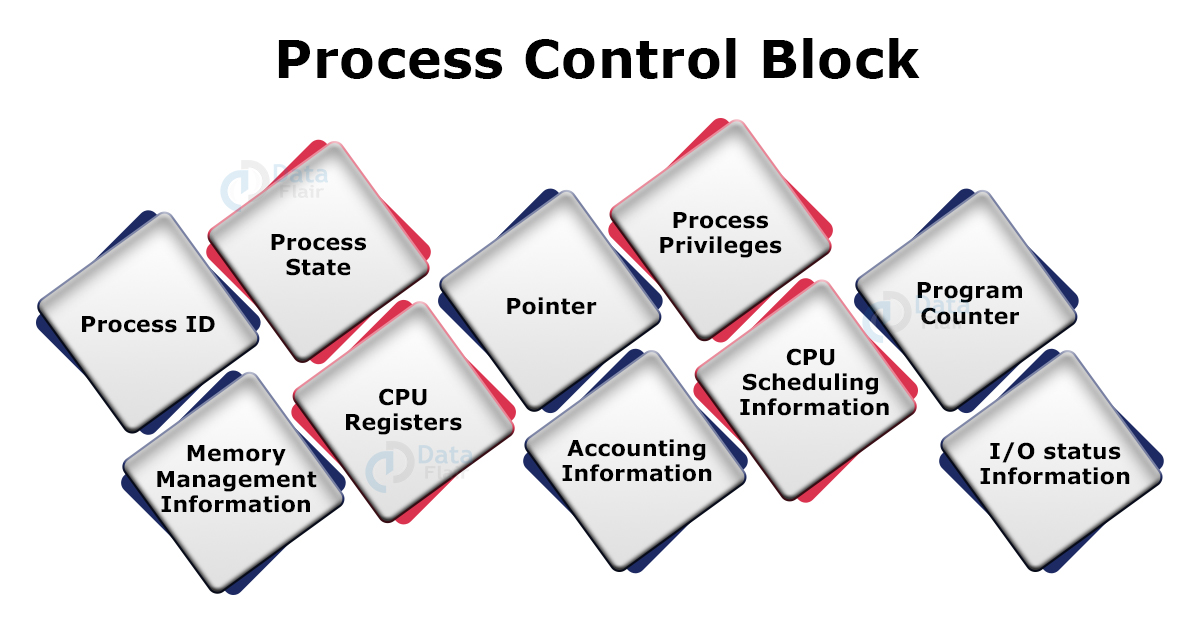Processes in Operating System
FREE Online Courses: Transform Your Career – Enroll for Free!
The program being executed by an operating system is a process. It takes place in a sequence and is the basic unit of work to be implemented in the system. A program during execution becomes a process and performs all the tasks for the user.
Sections of a Process in OS
A process has four sections. These sections are as follows:
1. Stack: This has temporary data like return address and local variables.
2. Heap: This is the memory allocated to a process dynamically, during its run time.
3. Text: This consists of the ongoing activity of a process that is represented by the value of the Program Counter and the contents of the processor’s registers.
4. Data: This has global and static variables.
Different times concerning a process in Operating System
1. Burst time: The time required for the execution of the process
2. Arrival time: The time at which the process enters the ready queue.
3. Turnaround time: The time taken by a process from entering the ready state for the first time till its exit time i.e., the difference between completion time and arrival time.
4. Waiting time: The time spent by the process in ready state i.e., the difference between turnaround time and burst time.
5. Exit time: The time at which the process completes execution and exits the system.
6. Response time: The time taken by a process, to be allocated to the CPU, for the first time after entering ready queue i.e., the difference between the time a process first gets CPU and the arrival time
7. Throughput: This is a way to find the efficiency of a processor. It is the number of processes executed by the CPU in a given amount of time.
Program
Program is a part of a code. It can be of any length from a single line to millions of lines. A computer programmer or coder is responsible for writing a program. It is a set of instructions written to perform specific tasks for the user. Following is a simple example of a program in the C programming language:
#include <stdio.h>
int main() {
printf("DataFlair \n");
return 0;
}
We can say that a process is a dynamic instance of a program. The secondary storage stores a program. This program converts into a process during execution. Software is a collection of computer programs, libraries, and related data.
Process vs Program in OS
The following table shows the difference between a process and a program.
| Process | Program |
| An instance of a program being executed. | A collection of instructions written to perform a specific task for the user. |
| Short lifetime | Long lifetime |
| Requires resources such as memory, CPU, I/O devices, etc… | Stored in hard-disk and doesn’t requires any resources |
| Has a dynamic instance of code and data | Has static code and data. |
| Running instance of code | Executable code |
Process Life Cycle in OS
During execution, a process has to go through multiple states. Though these states and their names differ in different operating systems, the following are the common states of the process life cycle:
1. Start: The initial state of a process when it is first created.
2. Ready: In this state, the process is ready to be assigned to a processor and waits for the OS to allocate the processor to it. A process can come into this state multiple times especially when the scheduler assigns the CPU to another process.
3. Running: After being assigned to a processor, the process enters into the running state and the processor executes its instructions.
4. Waiting: If another process occupies the resource required by the running process, the running process moves into a waiting state.
5. Terminated or Exit: A process moves to this state when an OS terminates it, or after it finishes execution and waits to be removed from the main memory.
Process Control Block (PCB) in OS
A data structure retained by the OS for each process is known as a process control block. Each PCB has its own integer process ID (PID) which is the identity of the PCB. PCB is a collection of all the information regarding a process like the state of the process, location of a process, etc. The lifetime of a PCB is as long as that of a process i.e., till the OS terminates a process.
Following is the information that PCB keeps a track of:
1. Process State: This is the current state of the process. It can be any state then, ready, running, waiting, or any else.
2. Process privileges: This allows/disallows access to system resources.
3. Process ID: This is the unique identification of a process like aadhar card for us.
4. Pointer: It is a pointer to the parent process.
5. Program Counter: This points to the address of the next instruction that is to be executed for a process.
6. CPU registers: This is where a process is stored before execution or entering the running state.
7. CPU Scheduling Information: Stores process priority and other scheduling information necessary for scheduling a process.
8. Memory management information: This contains page table information, memory limits, and segment table based on the memory used by the operating system.
9. Accounting information: Stores information regarding the amount of times a processor is used for process execution, time limits, execution ID, etc.
10. I/O status information: The list of I/O devices allocated to the process is stored here.
CPU-Bound vs I/O-Bound Processes
The process of CPU-bound needs more CPU time i.e., it spends more time in the running state. Whereas the process of I/O-bound needs more I/O time and less CPU time i.e., it spends more time in the waiting state.
Process Scheduling in OS
A process is the basis of computation. A process is a lot more than a program code. It is a program in execution. A process has four sections, namely, text, data, heap, and stack. We will discuss process scheduling and its types in detail in the next segment.
Summary
A process is an instance of a running program. There are four sections of a process stack, heap, text, and data. There are five states in a process, namely, new, ready, running, waiting, and termination. Every process has its own PCB that keeps track of all the information related to a process like a process ID, process state, pointer, priority, program counter, CPU register, I/O information, accounting information, and much more.
Did you know we work 24x7 to provide you best tutorials
Please encourage us - write a review on Google



